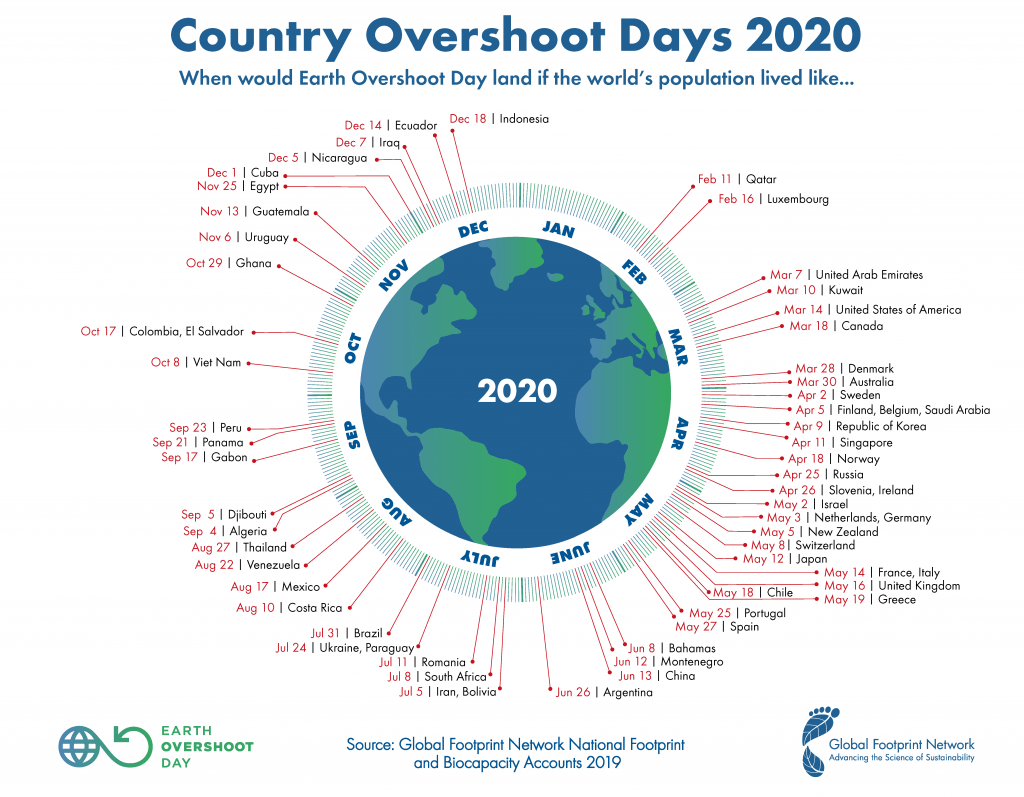
By August 22, humanity will have demanded as much from nature as Earth can renew in the whole year, according to Global Footprint Network. Earth Overshoot Day marks the date when humanity’s demand for ecological resources and services in a given year exceeds what Earth can regenerate in that year.
COVID-19 induced lockdowns caused the global Ecological Footprint to contract more than three weeks or 10% compared to last year. The main drivers were the carbon Footprint (reduced 14.5% from 2019) and the forest product Footprint (reduced 8.4% from 2019), but we still use as many ecological resources as if we lived on 1.6 Earths. As public health and economic recovery have emerged as dominant concerns globally, decision-makers are called to act on the unprecedented current disruption to build a future where all thrive within the means of our planet (“one-planet prosperity”).
The challenge of relaunching our economies presents countries with a unique chance to act on the future we want.
“Sustainability requires both ecological balance and people’s well-being ensured over the long-term, therefore this year’s sudden Ecological Footprint contraction cannot be mistaken for progress,” said Global Footprint Network CEO Laurel Hanscom. “This year more than ever, Earth Overshoot Day highlights the need for strategies that increase resilience for all.”
Many solutions exist that can be adopted at the community level or individually to significantly impact the kind of future we invest in, one decision at a time: how we produce the food we eat, how we move around, how we power ourselves, how many children we have, and how much land we protect for wildlife. Reducing the carbon footprint by 50% would move the date by 93 days.
With food systems currently using 50% of our planet’s biocapacity, what we eat matters. Policies aimed at reducing the carbon-intensity of food and the impact of food production on biodiversity – while improving public health – deserve special attention, as highlighted by joint research between Global Footprint Network and the Barilla Center for Food and Nutrition. Cutting food waste in half would move Earth Overshoot Day 13 days.
Because we need to prepare for a world increasingly shaped by climate change and resource constraints, Overshootday.org spells out what individuals can do, while the Footprint Calculator can help them measure their progress. Also, up and running initiatives by businesses, governments, communities, and individuals to effectively advance sustainability are celebrated on the crowd-sourced interactive #MoveTheDate Solutions Map.
In recognition of the postponed COP26 Climate Conference in Scotland, the Scottish Environmental Protection Agency (SEPA), the University of Glasgow, and Global Footprint Network will mark Earth Overshoot Day in Glasgow on August 20. Building on SEPA’s one-planet prosperity regulatory approach, the live-streamed event will highlight leaders from the private and public sectors in Scotland, the UK, and around the world.
Overall, enabling humanity to thrive on our finite planet is becoming a key business strategy. One-planet prosperity provides the framework for long-term success, with the United Nations’ Human Development Index and the Ecological Footprint as indicators, argues the e-book authored by Schneider Electric and Global Footprint Network.
The resilience of companies, but also countries and cities, depends on the sound management of ecological resources. Australia’s biocapacity dropped to nearly half during its massive forest fires in 2019, making Australia run a biocapacity deficit for the first time in its recorded history. In contrast, Scotland, with its aggressive decarbonization strategy and quite significant biocapacity assets, is realizing that it is about to close its long-held biocapacity deficit.
Global overshoot started in the early 1970s. Now, the cumulative ecological debt is equivalent to 18 Earth years. In other words, it would take 18 years of our planet’s entire regeneration to reverse the damage from the overuse of natural resources, assuming overuse was fully reversible. Solutions suggest that it is possible to live within the means of our planet. If we #MoveTheDate 5 days each year, humanity would be using less than one planet before 2050.
Explore Solutions to #MoveTheDate
Thriving lives within the means of our planet are not out of reach. Plenty of solutions exist in five major areas for improving sustainability:
planet, cities, energy, food, and population.

How we power ourselves
Decarbonizing the economy is our best possible chance to address climate change and would improve the balance between our Ecological Footprint and the planet’s renewable natural resources.
The carbon Footprint makes up 57% of humanity’s Ecological Footprint.
Not only is decarbonizing the economy our best possible chance to address climate change, but it would also vastly improve the balance between our Ecological Footprint and the planet’s renewable resources.
Over 150 years ago, the carbon Footprint of humanity was close to zero. If we want to live up to the commitment of the 2015 Paris Climate Accord, the carbon Footprint would have to be zero again before 2050.
Let us explain: The 2015 Paris Accord on Climate commits to limiting the global temperature increase to below 2°C (or even 1.5°C). Achieving this requires capping the concentration of greenhouse gases in the atmosphere. Where is this cap? We can answer this, but it gets even more technical! Put on your seat belt.
The prevalence of greenhouse gases is measured in parts per million or ppm (one ppm means one greenhouse gas molecule per million molecules of air). Reports by the Intergovernmental Panel on Climate Change suggest that the concentration of long-living atmospheric greenhouse gases, measured in CO2 equivalents, would need to be well below 450 ppm to live up to the Paris goal (see page 20 in IPCC’s 2014 assessment). This year, the atmosphere contains on average over 413 ppm CO2. When including all other greenhouse gases, the concentration in CO2 equivalents reached 500 ppm in 2019, according to the National Oceanic and Atmospheric Administration (NOAA), the U.S. government’s climate agency. NOAA also reports that the current carbon Footprint adds 2 to 3 ppm of CO2 to the atmosphere per year.
Given the high concentration already today, and the continued increase, living up to the Paris Climate Accord, therefore, means phasing out fossil fuels well before 2050. This is technically possible and financially beneficial. A number of plans have shown this, including those of Project Drawdown and WWF (both NGOs), of McKinsey (a business consultancy), and of the government of Scotland. The latter may not even be the toughest one.

Reducing the carbon component of humanity’s Ecological Footprint by 50% would get us from consuming the resources of 1.6 Earths down to 1.1 Earths. This corresponds to moving the date of Overshoot Day by 93 days, or about three months.

Environmental and financial benefits could be produced immediately, as off-the-shelf, commercial technologies for buildings, industrial processes, and electricity production already exist. Researchers from Global Footprint Network and Schneider Electric estimated that the current reduction potential, by retrofitting existing installations, could move Overshoot Day at least 21 days, without any loss in human comfort or economic productivity. It even leads to business advantages.
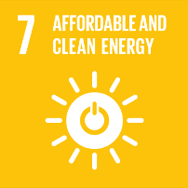
This aligns with the UN Sustainable Development Goal 7 Affordable and Clean Energy, which calls for substantially increasing the share of renewable energy in the global energy mix by 2030. To be sustainable, development ultimately must also fit within our planet’s resource budget.
How many of us there are

If every other family had one less child and motherhood was postponed by two years, by 2050 we would move Overshoot Day 49 days. *
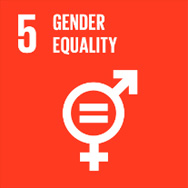
Investing in smaller families through the empowerment of women is core to “SDG 5 Gender Equality” which calls for ending all forms of discrimination against all women and girls everywhere.
The United Nations projects that between 7.3 to 15.6 billion people will be living on Earth by 2100. Despite unevenness in our respective Footprints, as population increases, so does the pressure on the planet. Powerful, people-positive solutions, such as empowering women and girls, are well known and promoted. And the social benefits are immediate and highly valuable in their own right. Ecological benefits manifest more slowly, yet the impact over time is massive.
However, population is a sensitive topic, full of taboos, prejudices, and a tragic, sordid history. The simple act of raising the topic may turn people off from the sustainability conversation altogether. At the same time, avoiding the population conversation does nothing to address one of the most significant contributors to humanity’s increasing demand on the planet. So, is it helpful to discuss population? We asked people around the world to share their thoughts on the topic.
How we produce, distribute, and consume food
Half of Earth‘s biocapacity is used to feed us.
Two major issues when addressing food sufficiency, malnutrition, and hunger (UN Sustainable Development Goal 2) are:
- Resource inefficiency in food production
Animal calories are significantly more resource-intensive than plant calories to produce. This caused China’s government to commit to reducing meat consumption by 50% by 2030. As a result, humanity’s Ecological Footprint would shrink by 377 million global hectares and move the date of Earth Overshoot Day back 5 days (including methane emissions). Current agriculture is also fossil fuel intensive. For example, it takes 5 calories of fossil fuel in Belgium to provide one calorie of meat. - Food waste
About one-third of the food produced in the world for human consumption — 1.3 billion tonnes every year — gets lost or wasted, with high and low-income countries dissipating roughly the same quantities of food, according to the UN Food and Agriculture Organisation.
In the United States, an estimated 40% of the food goes to waste. That’s the equivalent of the total Ecological Footprint of Sweden and Colombia combined, or the total biocapacity of Bolivia.
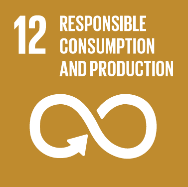
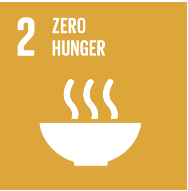
One target of UN Sustainable Development Goal 12 Sustainable Consumption and Production is to halve per capita global food waste at the retail and consumer levels and reduce food losses along production and supply chains, including post-harvest losses, by 2030. If we cut food waste in half worldwide, we would move Overshoot Day by 13 days. To be sustainable, development ultimately must also fit within our planet’s resource budget.
Evermore countries also depend on food from abroad. Such global specialization in food production may lead to efficiencies, but it also can reduce the resilience of food systems, particularly for countries that are both net-importing food And have low incomes. These countries are most vulnerable to food shocks.
#MoveTheDate With Food
In partnership with Barilla Center for Food and Nutrition, Global Footprint Network’s assessment of the Ecological Footprint of various foods highlights this overarching pattern: the healthier the food, the lower its ecological impact. A nutritionally balanced, vegetarian diet boasts an Ecological Footprint that is 2.5 times lower than that of one comprised mainly of animal-based proteins. Therefore, food that should make up a larger part of our diet are also those with lower Footprints. The tasty traditional Mediterranean diet fits the bill perfectly: lots of fresh vegetables, grains, olive oil, and low amounts of animal products.
Read more from our opinion editorial in Diplomatic Courier (English), EsGlobal (Spanish), or Green Report IT (Italian).
Because half of Earth’s biocapacity is used to feed us, food is a powerful lever to #MoveTheDate of Earth Overshoot Day. If we prevent food loss and food waste, prefer plant based foods, and choose foods that are grown with agroecological and regenerative practices, we could move Earth Overshoot Day 32 days.
How we help nature thrive
Reforesting 350 million hectares of forest would move the date of Overshoot Day by 8 days.
Many monetary assessments of our life-support system, or natural capital as some call it, conclude it is not worth much. Currently, very little of the global GDP trickles back to those who manage and care for the planet. Farms, forests, parks, wetlands, lakes, and oceans all support life. Yet they are also under enormous pressure. And without the life support system, nothing else is possible. Therefore, humanity’s quality of life — survival even — is dependent on the health of our planet’s biological resources or “web of life.”
Fertile soil, clean water, and clean air are necessary to provide humanity with the food and physical health we require to thrive. Vibrant natural ecosystems such as oceans and forests are indispensable to keep our planet livable, for example, by regulating the climate and absorbing carbon emissions. They also help keep humans psychologically and spiritually-grounded.
Given the massive overuse of the planet’s biological resources, our economies now are limited by the availability of Earth’s biocapacity. To ensure we have a healthy planet that can support us now and in the future, requires reducing human demand and maintaining our planet’s life-support system. The good news is, solutions already exist to boost the health of our ecosystems, and in turn, the planet’s capacity to regenerate biological resources. This is done in three ways:
- Classical conservation ― Efforts to protect and preserve wild spaces, particularly biodiversity hotspots. E.O. Wilson suggests that it would take half of the planet’s biocapacity to secure about 85% of biodiversity. Many organizations have supported such conservation efforts, including WWF who has worked on strengthening countries’ and regions’ park systems, and other organizations who have secured conservation easements on private and public properties.
- Restoration ― Many ecosystems have been overused and need to be restored. For example, forests converted to raise cattle in the province of Guanacaste in Costa Rica has led to land deterioration. With restoration, some of that land is now being reforested. Similar efforts have been made around the world, from China to Ethiopia. Reforestation of tropical forests and mangroves has the triple benefit of increasing biodiversity, sequestering carbon dioxide, and acting as flood barriers during hurricanes for coastal urban areas in the tropics and sub tropics. Trees have been the focus of the youth organization Plant for the Planet leading to their ambitious One Trillion Trees campaign.
- Regenerative agriculture and sustainable fishing ― To keep feeding humanity, we need to find ways of farming that maintain soil-productivity, groundwater levels, water cycles, and genetic diversity, while avoiding contamination. Regeneration is becoming an international movement and there are growing numbers of exciting examples, such as this one in Patagonia. Sustainable fishing is another aspect. It supports overall ocean health, and helps ensure that the ocean continues to provide for generations to come (approx. 3 billion people rely on seafood as their primary source of protein, especially in low-income countries). A healthy ocean also needs acidification to be slowed by controlling carbon emissions, since the ocean currently absorbs 30% of our carbon emissions.
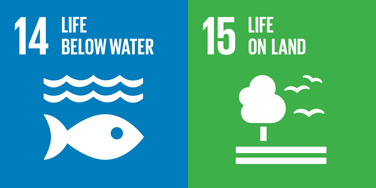
These solutions align with the UN Sustainable Development Goals (SDGs) 14 and 15 which call to conserve and sustainably use marine resources, and protect, restore and promote the sustainable use of terrestrial ecosystems, respectively. To be sustainable, development ultimately must also fit within our planet’s resource budget.
How we design and manage cities
If we reduce our Footprint from driving by 50% around the world and assume one-third of car miles are replaced by public transportation and the rest by biking and walking, Earth Overshoot Day would move back 13 days.
Eighty percent of the world population is expected to live in cities by 2050. City planning and urban development strategies are instrumental in balancing the supply of natural capital and the population’s demand.
UN Sustainable Development Goal 11 Sustainable Cities and Communities features several 2030 targets, including:
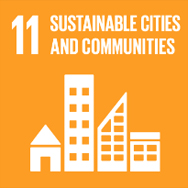
- reduce the adverse per capita environmental impact of cities.
- provide access to safe, affordable, accessible, and sustainable transport systems for all, notably by expanding public transport.
- enhance inclusive and sustainable urbanization and capacity for participatory, integrated and sustainable human settlement planning and management in all countries.
To be sustainable, development ultimately must also fit within our planet’s resource budget.
Transportation
In particular, city planning can play a major role in shaping our need for cars. It matters because personal mobility makes up 17% of humanity’s Carbon Footprint.
Additional resources
Press release in multiple languages
June 2020 press release (for more info about Earth Overshoot Day 2020)
How Earth Overshoot Day 2020 was calculated
Steps to #MoveTheDate of Earth Overshoot Day
Ecological Footprint data for more than 200 countries and regions
Business strategies for one-planet prosperity e-book (in partnership with Schneider Electric)
About the Ecological Footprint
The Ecological Footprint is the most comprehensive biological resource accounting metric available. It adds up all of people’s competing demands for biologically productive areas – food, timber, fibers, carbon sequestration, and accommodation of infrastructure. Currently, the carbon Footprint makes up nearly 60 percent of humanity’s Ecological Footprint.
About Earth Overshoot Day 2020
- The later date of Earth Overshoot Day 2020 reflects the 9.3% reduction of humanity’s Ecological Footprint from January 1st to Earth Overshoot Day compared to the same period last year, which is a direct consequence of the coronavirus-induced lockdowns around the world. The major drivers behind the historic shift in the long-term growth of humanity’s Ecological Footprint were decreases in wood harvest and CO2 emissions, which resulted in reduction in forest products Footprint (8%) and carbon Footprint (14.5%).
- Humanity currently uses 60% more resources than what can be regenerated – or as much as if we lived on 1.6 planet Earths. From Earth Overshoot Day until the end of the year, humanity grows the ecological deficit which has been increasing most years since the world fell in ecological overshoot in the early 1970s, according to the National Footprint & Biocapacity Accounts (NFA) based on UN datasets (with 15,000 data points per country per year).
- Earth Overshoot Day is calculated using the National Footprint and Biocapacity Accounts now maintained and updated by York University in Toronto and governed by the new Footprint Data Foundation.
About Global Footprint Network
Global Footprint Network is an international sustainability organization that is helping the world live within the Earth’s means and respond to climate change. Since 2003 we’ve engaged with more than 60 countries, 40 cities, and 70 global partners to deliver scientific insights that have driven high-impact policy and investment decisions. Together, we’re creating a future where all of us can thrive within the limits of our one planet. www.footprintnetwork.org
Media Contact
Laetitia Mailhes (France)
+1 (415) 794-2884
laetitia.mailhes@footprintnetwork.org
Amanda Diep (California, USA)
+1 (510) 839-8879 x309
Amanda.Diep@footprintnetwork.org




